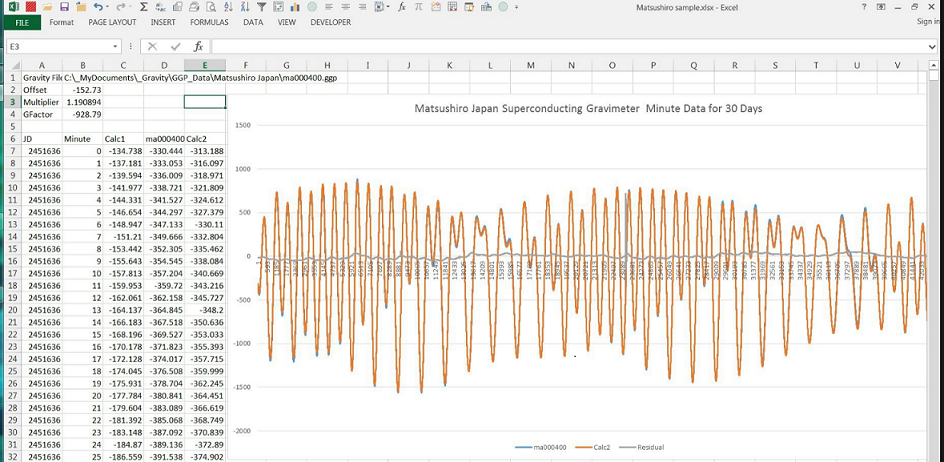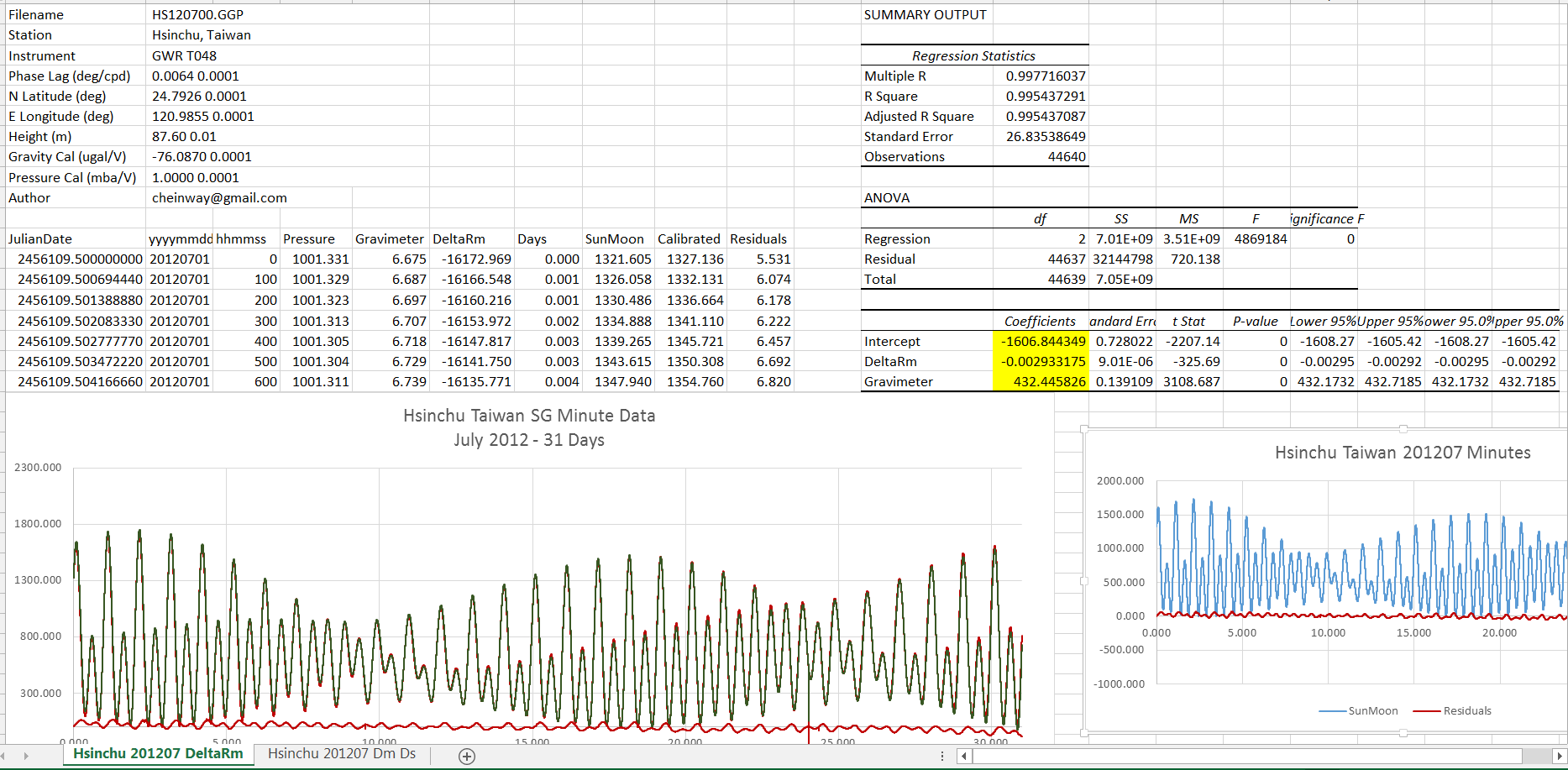Can a Penning trapped electron or ion be used as a time of flight gravimeter?
Subject: In your months long measurements on single electrons did you see diurnal variations? Has anyone tried to make a single electron gravimeter?
Gerald,
I was doing a quick review of linear and quadratic effects in paramagnetic resonance, and happened to notice “Gabrielse and company confined single electrons for months at a time”. For many years now, whenever I see any precise measurements I always check to see if the experiment was run sufficiently long and sensitive enough to track the sun moon tidal signal. It is a large signal and very precise. For groups making their first MEMS or atom interferometer gravimeter I always recommend it as a first test.
But I don’t know if you were making many small experiments and keeping the electrons trapped for occasional use, or querying them continuously. I am a bit tired today and could not find a good description.
Did you measure continuously for months? Was there any variation or drift? Any diurnal variation?
I read https://cfp.physics.northwestern.edu/documents/GeoniumTheoryReview.pdf but since it is in paper format, I haven’t reengineered the equations, assumptions and data. For the Internet Foundation I recommend that groups share everything in living form – equations, data, data streams, designs, algorithms.
I attached a couple of samples of what the sun moon tidal signal looks like at a superconducting gravimeter. It is just the Newtonian acceleration of the sun at the station minus the sun on the center of the earth, plus the moon at the station minus the moon on the center of the earth, plus the centrifugal acceleration at the station from earth rotation (WGS84 ellipsoid is good enough), and then dot that vector into the station North East Vertical unit vectors. For most locations a month is stable, but it only requires a linear regression (offset and multiplier) to fit the curve. The residual is almost all atmospheric and I am trying to use it to image the atmosphere to provide ground truth for climate and atmospheric models. I use the Jet Propulsion Laboratory solar system ephemeris and they would be happy if these groups would eventually provide ground truth for their model. The multiplier is close to the Lamb number and the offset gives and exact history of activities at the station – power level changes, changes in the helium coolant for the SGs, and other things. The seismic and magnetic signals are easy to remove by correlation. I got into this because I wanted to measure the speed of gravity. The signal at the stations is so precise, that it sets bound on the speed to parts per million, but it needs better instruments than using someone else’s data. When GW170817 showed that the speed of gravity and the speed of light are identical, not close, but identical, I changed to look for laboratory methods for time of flight gravimeters. That (time of flight) is the only easy way to locate and characterize gravitational and magnetic and electric and acoustic sources – that get picked up by the sensors. The Japan earthquake was picked up as a gravitational signal in both the SG and seismometer networks as a speed of gravity signal. The theory is well established and Jan Harms at LiGO is good with those kinds of calcuations. There are groups working on earthquake early warning – and they need better time of flight gravitational detector arrays. A lot is going on. But a fast electron based detector would help.
There are Bose Einstein gravimeters, electrochemical gravimeters, atomic force based gravimeters, and more. The particle accelerators now have to be designed to account for changes in gravity at the location, and all the atomic clocks long ago made adjustments for changing potential. The gradient detectors (gravimeters) are lower cost and more sensitive and faster, but I keep looking for new direct potential detector methods. The Mossbauer detectors should be the best, but I haven’t been able to make much progress with them. I can generalize the methods to some extent, but it needs a fresh perspective. Any of the “quantum” experiments, Sagnac, many communications experiments – any group getting into pico and femto those often can be recast to measure gravity in some form or other. Of course I spent years on LIGO, but it is rather large and clumsy. I went to UMD College Park. On paper, Charles Misner was my academic advisor, but Joe Weber is the person who encouraged me to read Robert Forward work. I did not meet Robert until many years later before he died and then just by email. Robert wanted to combine electromagnetism and gravity in a practical way by combining the units, dimension and instruments. I can do that now. He also devised many ways to build test models for gravitational signals in the lab. I improved that. After a group has measured the sun moon tidal gravity signal I encourage them to measure the speed of gravity. There are many natural and man made signals to use, and the sensors are now sensitive enough and fast enough for lab based targets. The sun moon signal works so well because it is purely geometric and time.
When I was calibrating the IRIS.edu seismometers there were some in the US Transportable Array that did not have the orientation of the axes right, or just off. But it is easy to use to allow the orientation and position to vary and search for the best minimum of the sum of squares of the residuals. Six constants is all that is needed. For devices that are highly nonlinear or that have frequency dependent responses, then the FFT makes and easy method. The impulse response methods I learned from the seismometer and other groups.
Richard Collins, Director, The Internet Foundation
Ref: Gyromagnetic ratio of a lone trapped electron is measured to better than a part per trillion at https://physicstoday.scitation.org/doi/abs/10.1063/1.2349714

